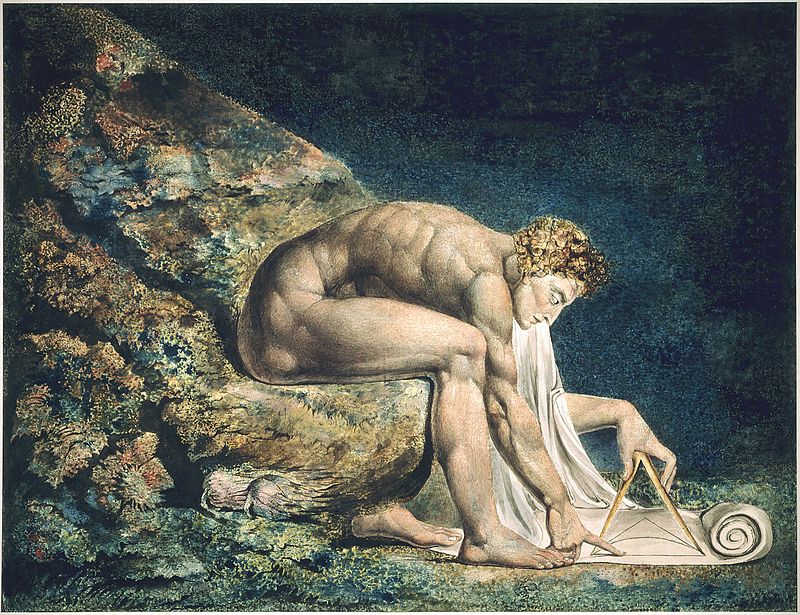 |
| William Blake Large Color Prints Newton |
Peter has requested that I use one of William Blake's pictures to explain something of what Blake was attempting to convey through his art and poetry. The image which Peter chose is of Isaac Newton, one of the originators of our scientific way of thinking. Blake lived in the Age of The Enlightenment which entailed a breakdown of traditional ways of thinking and acting. It was Blake's opinion that the consciousness of human and spiritual values was fading as science was giving more emphasis to sense data, reasoning and developing the physical world. Blake's memorable quote about Newton was "May God us keep From Single vision & Newtons sleep."
Blake's ideal was that man develop all four aspects of his psyche which would lead to completeness: Sensation, Emotion, Reason and Intuition. Being able to use only the Reason to determine what is real and valuable in life is what Blake called "Newton's sleep."
"Now I a fourfold vision see
And a fourfold vision is given to me
Tis fourfold in my supreme delight
And three fold in soft Beulahs night
And twofold Always.
May God us keep
From Single vision & Newtons sleep"
The image shows Newton leaning over his drawing board and inscribing geometric shapes on a two dimensional surface to define and describe a multidimensional world.
Thank you Ellie.
ReplyDeleteI am always glad when you help me see the insights within William Blake's work. I am also glad, when Blake takes a "position" on something, to discover that I essentially completely agree with him.
As for Sir Isaac Newton, well I hardly know the man.
Years ago aside from Newton's Three Laws of Motion, which are the basis of Newtonian mechanics, I did as it happened also know about Newton's and Gottfried Wilhelm Leibnitz's independent invention and development of calculus, and I remember reading somewhere that Newton had kept his use of calculus a secret, presumably because this gave him an advantage in calculating results over his peers. I remember that this didn't particularly enhance my opinion of the man.
Well, I decided to take a quick, very abbreviated Wikipedia look, more of a glance actually, at the man; and the results of that look suggest to me that maybe Newton didn't hide his invention of calculus after all.
Perhaps this excerpt from Wikipedia's Isaac Newton page may be of more interest to some of us including me in this period of pandemic and polarization.
"Soon after Newton had obtained his BA degree in August 1665, the university temporarily closed as a precaution against the Great Plague. Although he had been undistinguished as a Cambridge student,[16] Newton's private studies at his home in Woolsthorpe over the subsequent two years saw the development of his theories on calculus,[17] optics, and the law of gravitation.
In April 1667, he returned to Cambridge and in October was elected as a fellow of Trinity [College].[18][19] Fellows were required to become ordained priests, although this was not enforced in the restoration years and an assertion of conformity to the Church of England was sufficient. However, by 1675 the issue could not be avoided and by then his unconventional views stood in the way.[20] Nevertheless, Newton managed to avoid it by means of special permission from Charles II."
Peter
Now, when it comes to that Milton fella and that picture diagram we
ReplyDeletewere talking about . . .